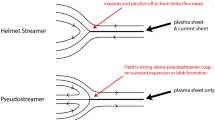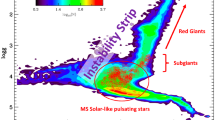Abstract
IF a rotor could be spun so that it had an inertial decay time ∼ 1011 yr, 1018 s, it could test matter creation cosmologies1–3 at a significant level. The advantage of this method over previous ones4–8 is that the result is independent of the form in which matter is created, providing it stays in place. We have designed an experiment to test this process; it is under construction and is described here. It consists of an inertially spinning rotor suspended inside another rotor, a modification of the double magnetic suspension8. Past measurements or estimates have not unequivocally answered the question of matter creation. Cohen and King4 established an upper limit of 4×10−23 g per g per s on the creation rate of hydrogen in mercury metal. Gittus5 suggested that matter created in rocks takes the form of interstitial atoms which diffuse into dislocations. Towe6 disputed this, noting that if mass proportional creation were occurring, 30% of the atoms in old terrestrial rocks would occupy interstitial positions and this would result in lattice disruptions. Gittus7 later proposed that the matter multiplication rate for crystalline materials could be found by determining the ratio of the shear modulus to the crystal viscosity. He suggested that a reasonable estimate for the sensitivity of the method might be 3×10−18 atoms per atom per s, although this has not been tested. In a geophysical argument, Wesson8 can account for the observed expansion rate of the earth by appealing to a mass proportional matter creation whose rate is 7×10−18 g per g per s, but he notes that this is in conflict with the result of Cohen and King; it exceeds Dirac's prediction by several times.
Similar content being viewed by others
References
Dirac, P. A. M. Proc. R. Soc. A165, 199 (1938).
Canuto, V. & Lodenquai, J. Astrophys. J. 211, 342–356 (1977).
Hoyle, F. & Narlikar, J. V. Mon. not. R. astr. Soc. 155, 323–335 (1972).
Cohen, S. A. & King, J. G. Nature 222, 1158–1159 (1969).
Gittus, J. H. Proc. R. Soc. A343, 155–158 (1975).
Towe, K. M. Nature 257, 115–116 (1975).
Gittus, J. H. Proc. R. Soc. A348, 95–99 (1976).
Wesson, P. S. Q.J. R. astr. Soc. 14, 9–64 (1973).
Beams, J. W. Rev. Scient. Instrum. 34, 1071–1074 (1963).
Beams, J. W., Spitzer, Jr, D. M. & Wade, Jr J. P. Rev. Scient. Instrum. 33, 151–155 (1962).
McCombie, C. W. Rep. Prog. Phys. 16, 266–320 (1953).
Munk, W. H. & MacDonald, G. J. F. The Rotation of the Earth 204 (Cambridge University Press, Cambridge, 1975).
Braginsky, V. B. Tech. Trans. NASA TT F–672 (National Aeronautics and Space Administration, Washington, D.C. 1972).
Author information
Authors and Affiliations
Rights and permissions
About this article
Cite this article
RITTER, R., GILLIES, G., ROOD, R. et al. Dynamic measurement of matter creation. Nature 271, 228–229 (1978). https://doi.org/10.1038/271228a0
Received:
Accepted:
Published:
Issue Date:
DOI: https://doi.org/10.1038/271228a0
- Springer Nature Limited
This article is cited by
-
Anisotropic solutions in the 5D space-time-mass theory
General Relativity and Gravitation (1991)
-
An embedding for general relativity with variable rest mass
General Relativity and Gravitation (1984)
-
A proposed laboratory experiment to measure ?/G
General Relativity and Gravitation (1982)
-
Dynamic measurement of matter creation and Earth expansion
Nature (1978)





